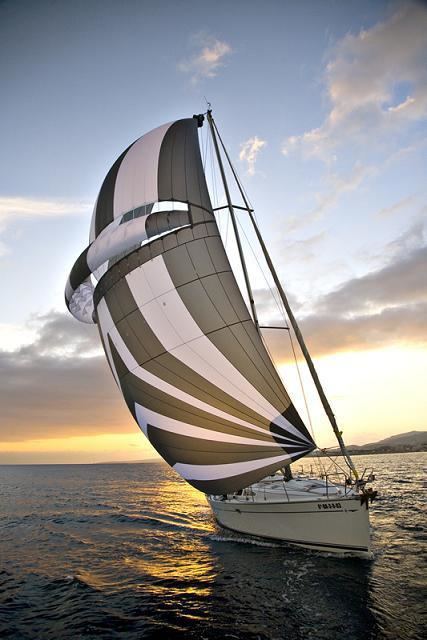 | ||
The Parasailor and Parasail, designed especially for cruising couples and short-handed crews, are easy to handle and well tempered. These sails make it possible to use one sail as spinnaker and gennaker while providing improved performance. It can be used between 70 and 180 degrees to the wind. Relieving the pressure on the bow and the stabilising effect of the Parasailor and Parasail improve the effect of the rudder and decrease the rudderthrows needed.
Contents
The Parasailor has a double-layer wing which inflates as the wind fills the sail. This acts like a soft batten, holding the sail out and actively re-opening the collapsed leech. The wing generates lift that raises the bow of the boat, and also ensures that there is no loss of propulsion. Thanks to this lift, any yawing by the boat is prevented, making a much more comfortable ride. Even if the Parasailor has collapsed after a sudden strong wind shift, the spreading movement of the wing supports the re-opening once the wind has shifted back again.
Parasail
The Parasail was developed as a variant of the Parasailor, and is a great light wind performer. With very little tendency to roll, it is ideal for small crews. It can be used with a spinnaker pole but it is not necessary. The Parasail has a single-skinned wing as opposed to the double-layer wing of the Parasailor
Wing Technology
A tailwind fills the sail and propels the yacht forward. Part of the pressure escapes through the opening in the sail behind which the wing has been fitted in such a way that the air flows past, above and below it. Thanks to the shape of the wing and the angle at which the air flows towards it (with the angle optimised for efficiency), the air on the upper surface of the wing accelerates faster than the air flowing over the lower surface. The resultant increase in pressure on the lower surface compared to the upper surface causes the wing to lift, helping to stabilize the sail. The wing lift achieves two essentials effects:
